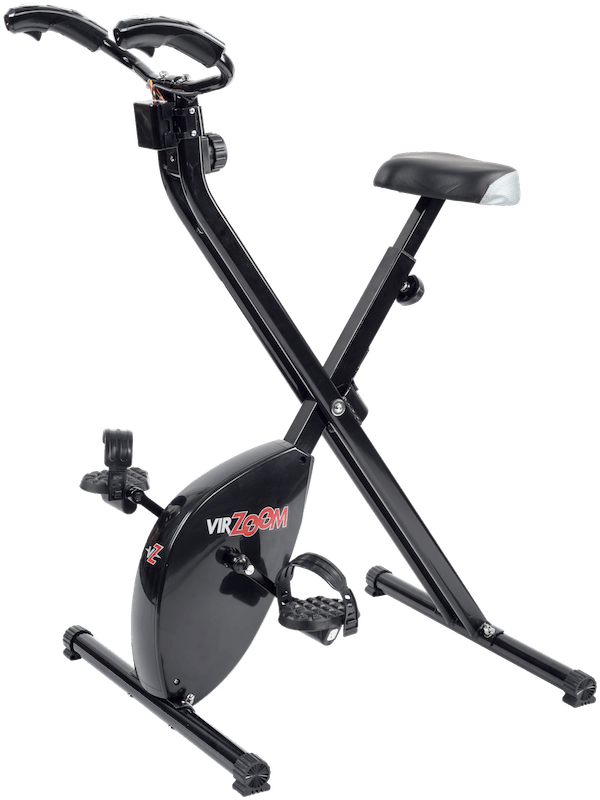Hate Working Out at Home? This VR Video Game Might Change That
During all of this, I was actually sitting on a stationary bike in a Midtown Manhattan conference room, working up a sweat.
"It's meant to trick you into working out," says Eric Janszen, co-founder of VirZOOM, which turns at-home cycling workouts into virtual reality video games.
"It's meant to trick you into working out."
Here's the thing: I like working out and I don't like video games, so this product is not made for the likes of me. Still, the device intrigued me—and most people have opposite feelings on those two points, so I hopped on the bike in the name of research.
And after demo-ing a bunch of games (all of which I was terrible at, naturally), I was having fun and getting my heart-rate up.
It got me thinking: Could the VirZOOM be the device that finally gets Americans moving?

What you'll need to get started
VirZOOM had a limited release to early-access customers in June 2016, but just became widely available through retailers like Amazon and Target in November. The bike itself retails for $400, but you'll also need a virtual reality system—HTC Vive, Oculus Rift, or Sony PlayStation VR—in order to use it.
You won't, however, need a bigger game room (or apartment), since it's surprisingly small and light and folds conveniently in half for storage.

{{post.sponsorText}}

How it works
Once everything is on and connected, you get on the bike and put on your VR headset. At first, you'll be looking at the game menu, and you can navigate it by leaning to the right and left and then using buttons on the handlebars to make selections.
I tried a bunch of the free games that come with it, and in every one, rather than pressing a button to "go," you just start pedaling. The faster you pedal, the faster you move. You steer by leaning right and left, and can also move up and down by turning your head (when you're flying, for instance). First, I was the aforementioned cowboy (not sure if there's a cowgirl option?) and saddled up on the Pegasus. Easy enough. But when I was tasked with navigating an attack helicopter with the goal of collecting fuel and shooting turrets, my utter lack of video game proficiency came through—but I certainly laughed a lot.
While it did feel a little gimmicky, I was laughing and having fun the whole time.
My favorite games were the ones that included a racing element—on a bike and then driving a car. In those, I started pedaling faster and faster and broke a little bit of a sweat, and I could see how someone who was competing against other real players (you can race live against others who have the bike around the world) could really get their heart rate up.
Those games also felt the most real, since the on-screen movement closely mimicked what my body was doing. At one point, for example, I abruptly stopped pedaling because I was about to crash into another biker. My body really thought it needed to stop (silly body).
At the end of the day, pedaling on a stationary bike at a moderate pace for an hour is no functional fitness routine, but if the person doing it would have spent that same hour sitting on the couch playing with their VR goggles, why not get them moving? It certainly has more potential for getting people to produce real sweat than Wii Fit ever did. And while it did feel a little gimmicky, I was laughing and having fun the whole time.
Speaking of IRL gaming challenges, this writer made Pokemon Go her cardio—and this gym has taken HIIT workouts to new high-tech levels.
Loading More Posts...